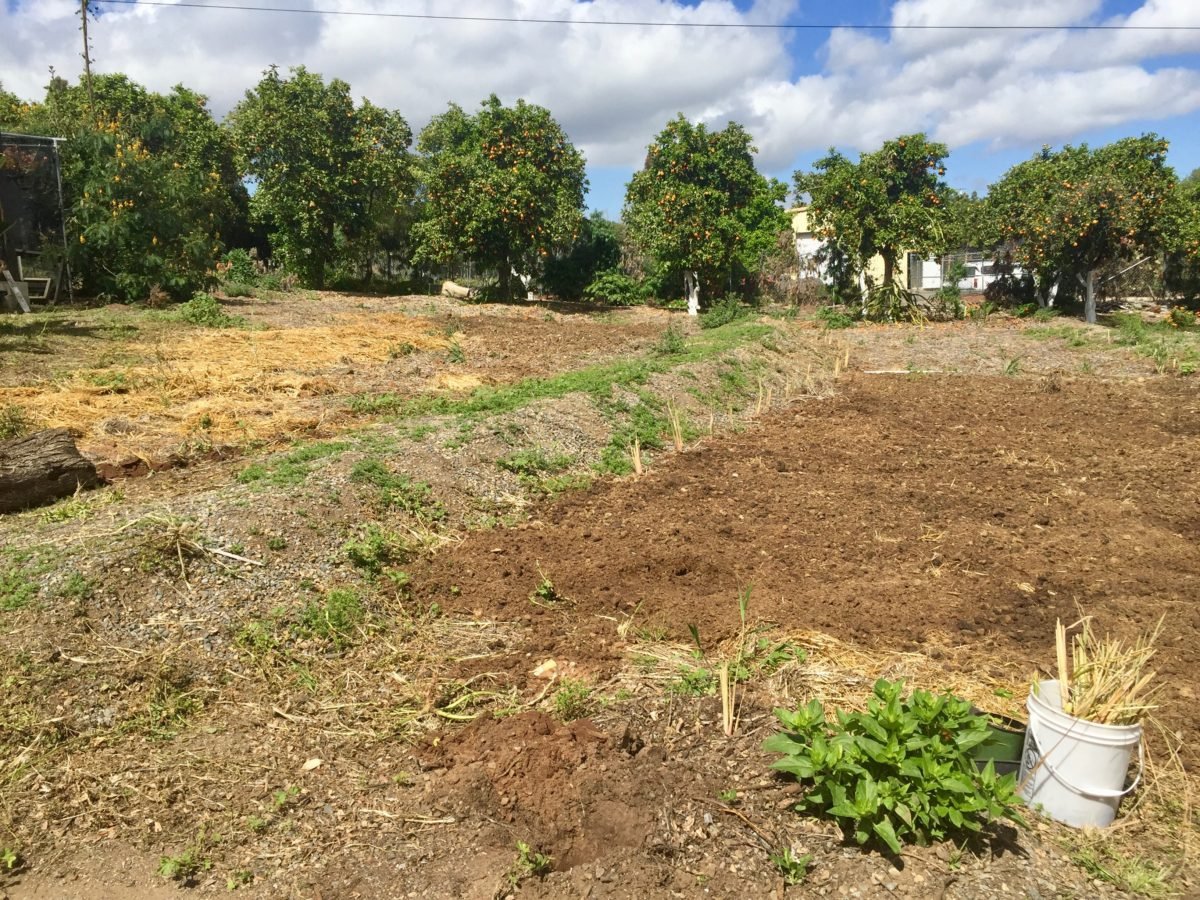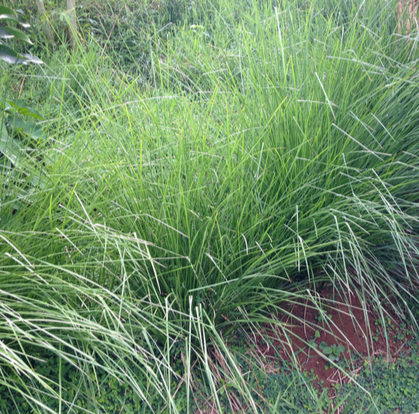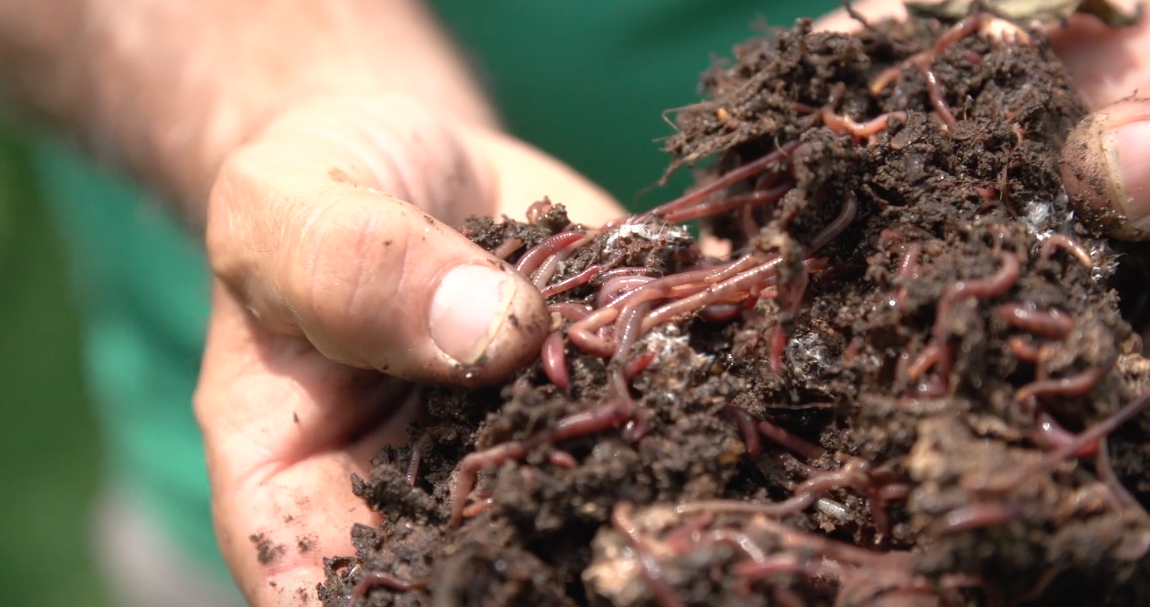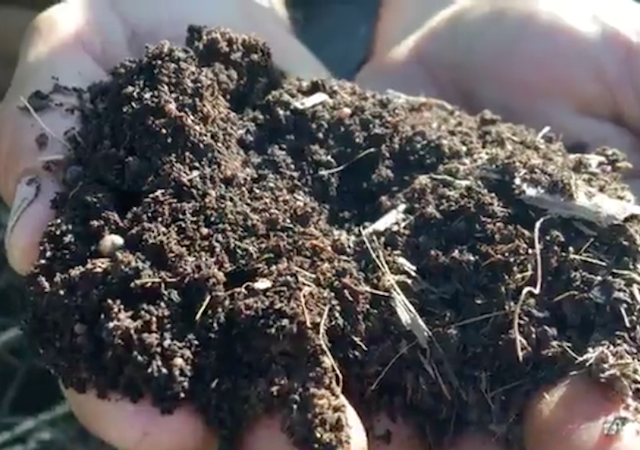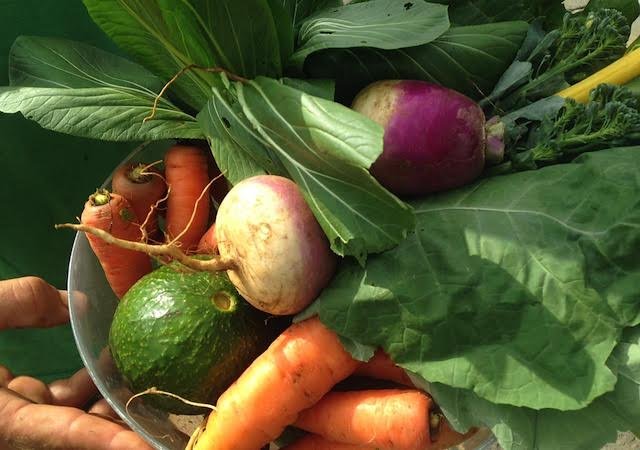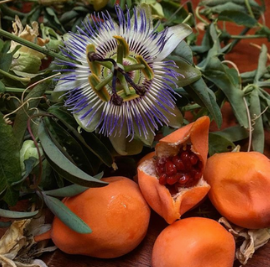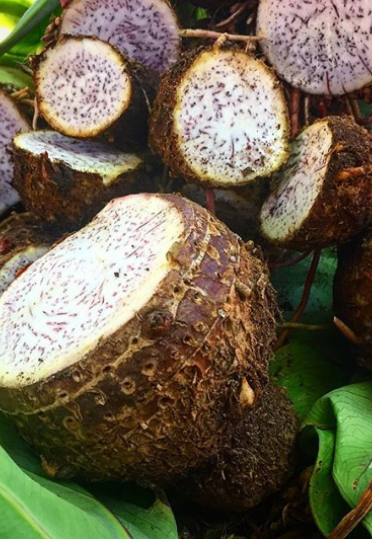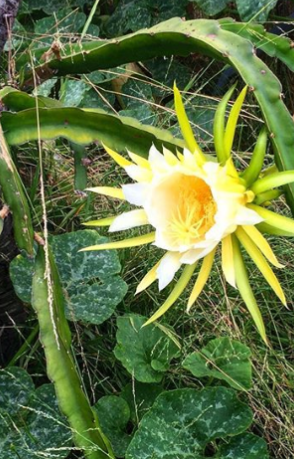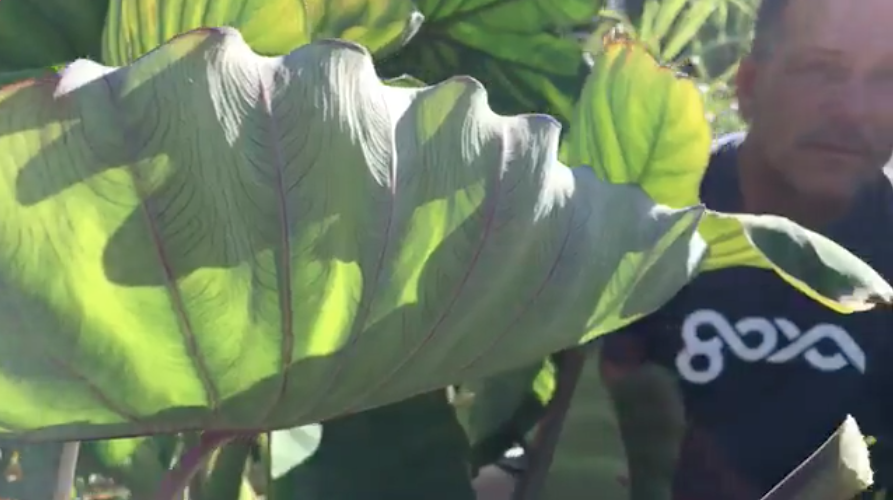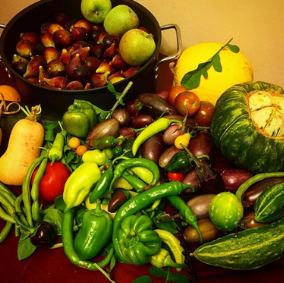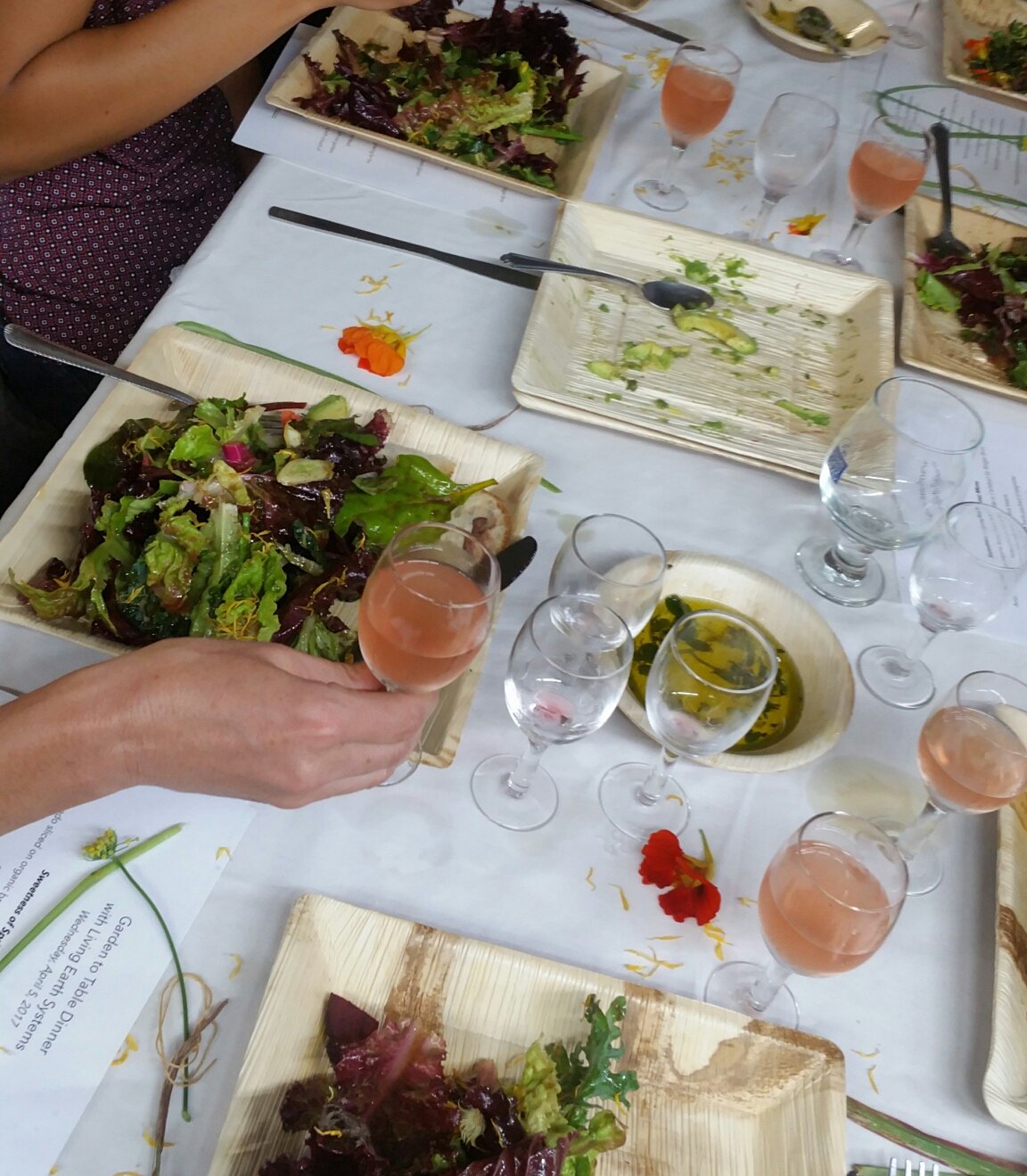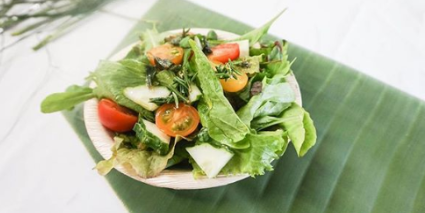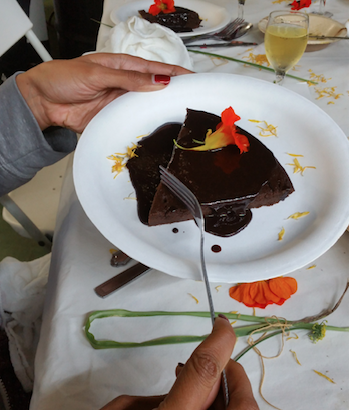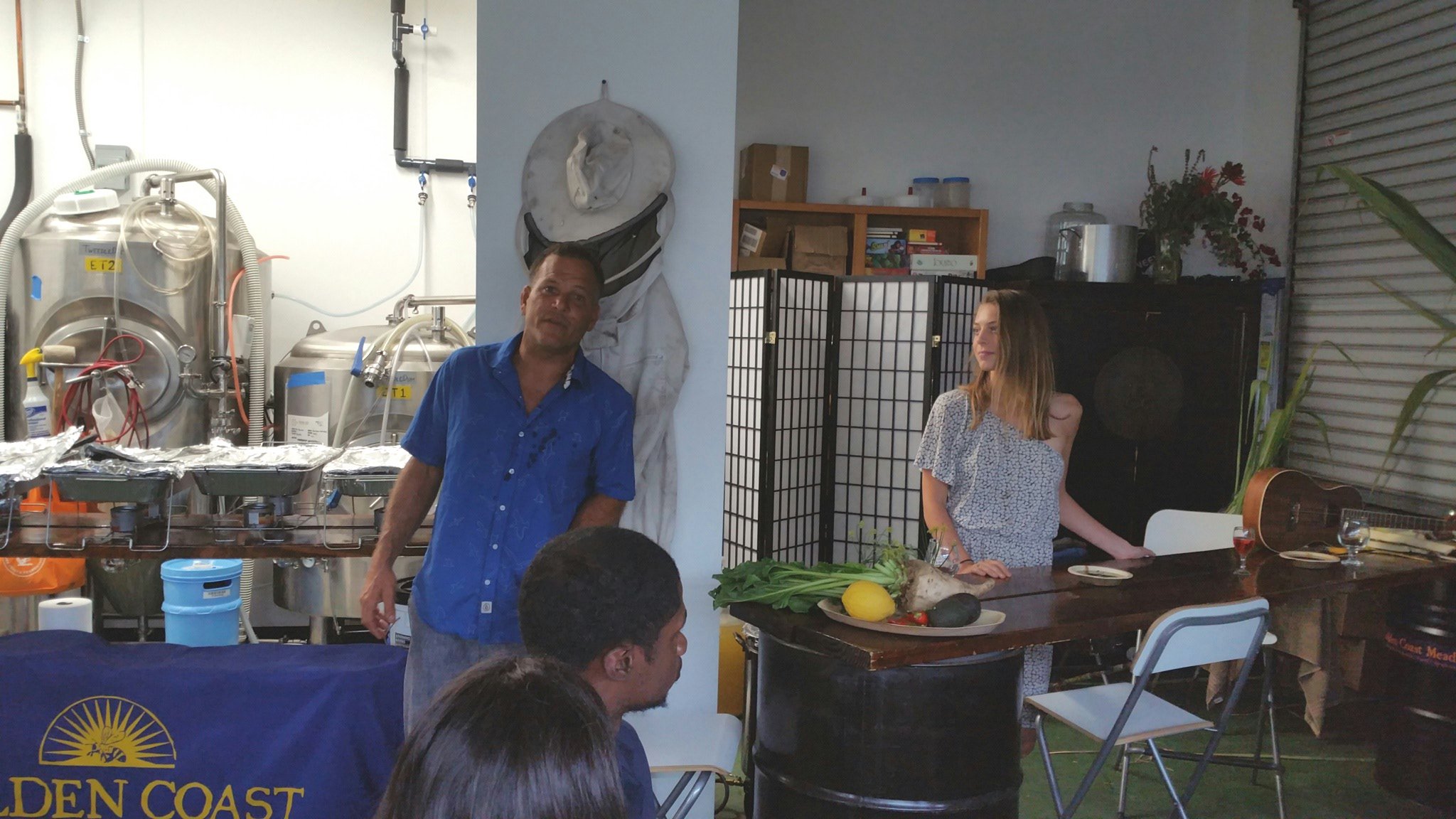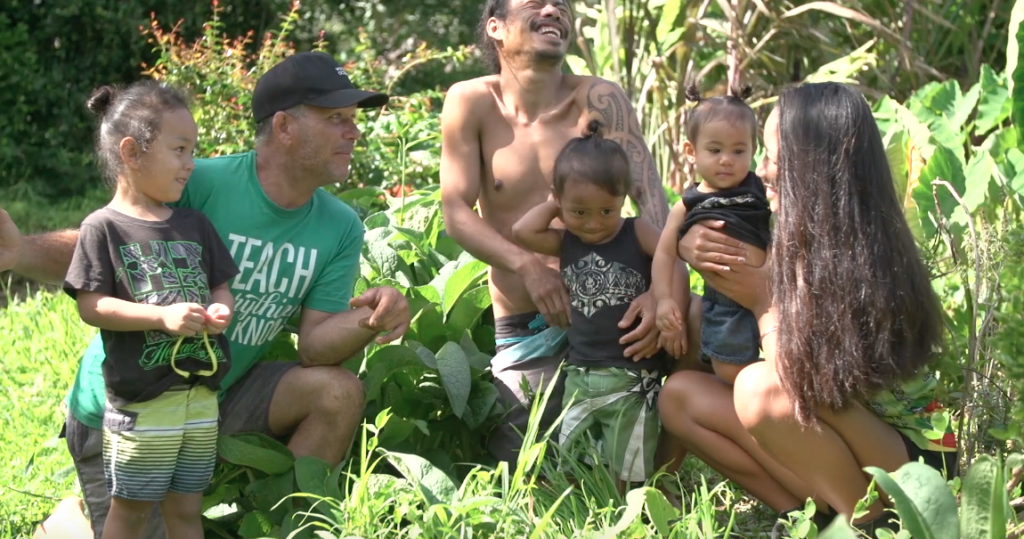How we turned a ¼-acre parking lot into a Closed-Loop Microfarm in 1 year
…that now feed 9 children, 11 adults, and deepens their connection to Nature so they can align with their values.
It was February 2016 in Fallbrook, CA…
The piece of land is four acres in total. An old nursery site that has 2 houses, 4 other structures, and an empty pool with a broken liner. There was a ¼-acre area that was used as a decomposed granite parking lot, about 20 orange trees, and a couple different types of trees on the property.
We saw the potential of the parking lot. We knew we could turn it into a paradise.
The goal was to bioremediate the soil, which had been heavily chemically fertilized for many years from the nursery operation. The soil had been compressed and hardened from the sun and cars parking on it. It was devoid of organic matter with lots of leftover tiny green pellets from triple-16 additive fertilizer. There were no worms, no life in the soil – the water wouldn’t penetrate it. We wanted to see how we could bioremediate it using our practices to actually allow life itself to penetrate into the soil.
If you want to download this Case Study as a PDF click here.
Chlorine Swimming Pool to Fertile Aquaponics System
One of the very first steps was to put a new liner in the swimming pool and convert it into an aquaponics system and fertility hub. To take out the standard chlorinated approach and instead filtering it, add fish and then use that water to start feeding and nurturing the old parking lot area below.
As soon as the chlorine was switched out we noticed life responding to the pool – toads, bats, dragonflies, bees… all now able to drink from the pool without being poisoned by chlorine.
Land Reform & Strategic Planting
We slightly reformed the landscape with some swales to hold water in place, and then we piled on wood chips from tree trimming that we did on the land.
We strategically planted things that we could build soil with – that would send down tap roots like vetiver grass. The taproots pulled minerals out of the deep subsoil and brought it to the surface for us to cut and compost. We grew sugarcane, moringa, vetiver grass, lemongrass… We grew them on the borders and we could chop them and mulch with them and allow them to grow right back up. The worms would eat and compost this mineral-rich material within the growing beds, creating amazing soil.
We planted a bunch of different legumes and then we inoculated the soil with rhizobia to fix Nitrogen in the soil. We also brought in different types of fungi – mycorrhizal cultures, indigenous fungal cultures and more. Even oyster mushrooms were ground up and thrown into the wood chips. We added a little bit of horse manure* that we had access to as additional fertilizer. We let all of those additions run their course for a while.
* Disclaimer: As far as horse manure goes, you need to make sure that whoever owns or feeds the horses are using some sort of a natural wormer, and not one of the chemical wormers that they’re feeding horses these days. Be conscious of whatever you source and where you source it.
Composting Cardboard & Paper Scraps
There were 14 adults and 3 kids living on the property at this time. We were taking all of their kitchen scraps in five gallon buckets and let them know that we could divert that from going to the dump, and instead actually use their “waste” to feed the soil – to add organic matter and life.
Along with collecting all these food scraps, we collected the cardboard from everyone, and we purchased a couple hundred dollars in composting worm. We also located earthworms in areas around the property. We designed and created an ecosystem that they could thrive in, through having wood chips, moisture, surface area, and places for them to hide out through the cold and through the heat of the day. We allowed an environment that was healthy for them to thrive, so they could do a lot of work breaking down the wood chips and all the organic material we were adding.
Through composting all the kitchen scraps and building our worm population to giant proportions we were able to take worm populations right out of our composting areas into the ex-parking lot area that we had terraformed into swales, added organic material, and where we had strategically planted out. All of that was being flooded with the water from the pool that was converted into an aquaponics system when we would cleaned out the fish waste from the bottom.
THE RESULTS
Through repetition and consistency, along with:
Strategically planting things,
Building the number of creatures that were there,
Composting food scraps with earthworms and the other creatures, and
Allowing the biodiversity to actually thrive and crawl and bring the food underneath the mulch that we laid in place….
We started growing vegetables just about 6 months after we started this whole process.
We’ve grown thousands and thousands of pounds of vegetables in a ¼-acre lot that was a parking lot only 2 years before. And the soil just keeps getting better and better.
UTILIZING KELP & OTHER WASTED RESOURCES
We practice finding things that are considered waste in other places and utilize them. For example, everyone is allotted a certain amount of kelp that they’re allowed to take off the beaches in California. We use kelp by bringing that back and feeding it to the earthworms along with the food scraps and all the cardboard and paper scraps from the property. That gave us a mountain of black gold.
Within a year we were able to build over eight inches of rich, nutrient-dense topsoil, and grow incredible vegetables, fruits, and herbs as a byproduct.
It was rock hard decomposed granite, that you couldn’t grow anything in, and it’s now teeming with life and just gets better and better with each planting and with the management system we have in place.
If you want to download this Case Study as a PDF click here.
We’ve almost fully closed-the-loop with this farm, but instead of sticking to the rigid definition, we decided that utilizing others waste resources were incredibly important for diverting “waste” that would be going to the dump, and it would immensely benefit our soil building goals.
For example, we’re not going to say no to awesome kelp when you can pick it up off the beach, stop it from turning to methane in the air, feed it to your worms, and create a healthy ecosystem with it. It’s free as well.
Also, we were able to use the food scraps and cardboard and paper waste from the multiple families, couples, and individuals living on the property. By soaking the paper scraps and cardboard in pond water for a few hours or days, and then placing them in our worm composting system, we were able to compost all of the property’s paper scraps and cardboard, causing a boom in our worm populations and amazing fertilizer to spread across the property.
Growing Hawaiian Fruits & Vegetables in Southern California
In addition to the challenge of building cubic yards of soil in a years time, we also experimented with growing Hawaiian and subtropical crops in a completely new climate.
We grew taro, sugarcane, vetiver, and moringa with total success. The plants thrived in the now nutrient-dense soil and even lasted through winter to naturalize!
FARM TO TABLE LIVING
We’re 2 ½ years from beginning the transition from parking lot to paradise, when writing this Case Study. There are broccoli plants still growing on the property that are 2 years old, still producing broccoli florets month after month. There are brussel sprouts that are 2 years old, cauliflower, sugarcane, sorghum. There’s an incredible diversity of moringa, orange trees, herbs, vegetables, a swimming pool converted into an aquaponics system. There are now 9 adults and 11 children that are out in the garden daily.
For two of those families on the 4-acre property, half of their food comes out of that garden and all they have to do is source some humanely raised meat and they’ve like cut their diet costs in half and they’ve created a closer relationship to nature. We feel that we’ve been able to help people live a little closer to their values and their ideals.
A lot of people in this day and age want to walk a little closer to nature and develop that relationship. There’s been a separation. It’s really been empowering and fulfilling in many ways to see these value systems be empowered.
We have a young family of 4 in our intern program on the property now who are really incredible. They’re learning a lot through the whole experience of taking care of the land and eating from the garden.
In addition to feeding the families on the property, we held multiple private farm to table dinners and workshops, feeding the community and showing what’s possible when you think outside the box. And just how delicious home-grown, home-made can be.
EMPOWERING PEOPLE TO LIVE IN ALIGNMENT WITH THEIR VALUES
A lot of people today would like to know a little bit more about where they come from, where their food comes from, why they’re here or what’s their connection to nature. We think some of the simpler answers come with immersing yourself in it and observing, and also being able to rely on some of your elders’ observations and people who’ve been through it. But we do feel like a lot of people’s values right now are that they want to empower themselves with learning how to not only grow their food but to be better stewards of the earth.
We see all around us the last white rhino is gone, and we ask: What are we leaving for our grandchildren. We soo more and more people with a value system where people are re-evaluating the values that have been handed down to them for the last 50, 80, 100 years…
ADVICE IF YOU WANT TO START YOUR OWN REGENERATIVE AGRICULTURE PROJECT
There’s not a one size fits all for that, that’s for sure. Timelines and budgets can vary depending on your time freedom, your household income and expenses, your skill level…
You can go buy ready-made compost from an organic compost company and lay it on top of rock and be farming instantly. You can take earthworms and leaves and branches and fungi and throw it on the top of the rock and crush it and eventually mix it with the rock and have awesome soil compost that you can grow anything in after some time. Those are two different approaches. I kind of opt for a combination of the two.
We need those long-term situations to allow these mycorrhizal cultures to take hold and allow plants to utilize what’s there and make it available for them. But we also have a lot of shortcuts that we can take having modern technology that can sort of bridge the walk to nature.
I’m a huge fan of air pumps and solar panels and being able to move water around and having a microscope to recognize things and also being able to put them put them together where they can work together understand the roles that they play and allow them to work with each other. I think that’s really important.
SELF-SUFFICIENCY AS THE LONG-TERM GOAL
When you start a new farm or growing area you are setting up a system that in the long run is completely self-sufficient and closed-loop. But on the front end when you’re just getting it started you may go to the store and purchase stuff, or collect from your surrounding area, but your intention for the long haul is close-loop and self-sustaining. Right?
So when we say closed-loop, let’s say 99 percent closed loop. I think to use the word completely closed-loop would be arrogant because you would eliminate yourself from getting seeds or valuable resources from somewhere else. You eliminate yourself from resources that are available to you that aren’t hurting anything but they’re helping the environment somewhere else by utilizing them within your system.
That ideal of a 100% closed-loop farm is a bit of stringent lofty ideal. But a 99% closed-loop farm, where you choose the stuff you bring in and it’s something that helps your environment somewhere? Yeah. That’s regenerative agriculture to me.
I’m going to bring some trout or some tilapia or whatever it is into my system and that water system will be closed-looped. It’ll feed the bees and the birds in my neighborhood and I won’t poison them with chlorine. I won’t poison the life in the soil with the chlorinated water.
We’re basically mimicking nature and setting up the systems so they take care of themselves.
They perpetuate their systems, where a plant can literally take minerals from a rock through the fungi interaction with a mycorrhizal culture.
If you want to download this Case Study as a PDF click here.
Don’t be afraid to Pin me to save for later!
NOW YOUR TURN!
Once you’ve had a chance to read through this Case Study, we’re curious which step resonated most for you and why?
Let us know in the comments below.
Share as much detail as you can. Because your story may be just what someone else needs to have a major breakthrough.
Important: please share your thoughts and ideas directly in the comments. Links to other posts, videos, etc. may be removed.
Thank you so much for reading, sharing and showing up for this community. Your feedback and support fuel our work and we are so grateful.
